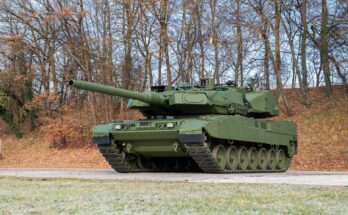by Dan Darling, International Military Markets Analyst, Forecast International.
With the April 26 launch of its first indigenous aircraft carrier, China has signaled its resolve to build a first-rate navy with a global reach. China’s long-term goal of building a blue-water navy capable of extending its maritime presence beyond its immediate region continues to bear fruit. That process took a step forward with the launching in the northeastern port city of Dalian of the locally built ship.
The new, still unnamed carrier – China’s second following its purchase and refit of the incomplete Soviet-legacy carrier Varyag from Ukraine in 1998 – will now undergo additional outfitting, followed by two years of sea trials prior to commissioning.
Development of the latest carrier began in 2013 and moved forward in earnest in 2015. Chinese engineers and designers sought to utilize a design similar to that of China’s Soviet Kuznetsov-class carrier, now renamed Liaoning (CV16), and build on lessons gleaned from fitting out the ex-Soviet vessel. Like the Liaoning, the new 50,000-ton Type 001A (CV17) carrier is conventionally powered and features a ski-jump deck and a short takeoff but arrested recovery (STOBAR) system for launching and recovering aircraft. Also like the Liaoning, the new carrier can only handle the People’s Liberation Army Navy (PLAN) shorter-range, lighter J-15 combat aircraft and likely has an aircraft capacity of just 36 platforms when factoring in helicopters.
While the new carrier adds credibility to China’s shipbuilding ambitions and naval aims, the ship is probably destined to be used much like the Liaoning – primarily as a training ship – despite claims by the PLA Navy of her being “combat ready.”
The new warship does little to alter the balance of power in the Pacific, as the U.S. Navy’s nuclear-powered carriers can launch more heavily armed, longer-range fighters from their decks via their steam or electromagnetic catapults. On top of this, the U.S. Navy’s Gerald Ford-class carrier can carry up to 52 fixed-wing aircraft alone, meaning American carriers feature far greater combat aviation capacity.
Further, both Chinese shipbuilders and the PLA Navy remain in the learning phase when it comes to catapult technology and carrier operations. This means that despite its incremental steps, China is still years away from having a naval carrier group with strike capability that is able to extend beyond the nation’s immediate waters.
However, design and testing work continues on a third carrier –tentatively designated Type 002 – with catapult-launching capability. Ultimately, China is expected to build up to six carriers, each with increased seagoing range and launch capacity. This development will allow China not only to push its air defense umbrella farther out from its immediate periphery, but to provide the PLA Navy with the ability to extend carrier group operations deep into the Indian and Pacific Ocean regions – well beyond its so-called second and third island chains, and thus bring it into contact with U.S. naval bases in Hawaii and make a claim for naval primacy in the Indian Ocean region.
If it had not already been heard, the message is now loud and clear: through its ongoing naval buildup, China intends to wield military superiority across its near domain and command respect as a global superpower. Whether intimidating Taiwan, coercing Japan into ceding claims to islets in the East China Sea, underwriting its dominance in the South China Sea, spreading its influence across the Indian Ocean region, or preventing U.S. intervention in regional conflicts, China has no intention of returning to a status based on mere land power. Gunboat diplomacy is Beijing’s new way forward.
Please feel free to use this content with Forecast International and analyst attributions, along with a link to the article. Contact Ray Peterson at +1 (203) 426-0800 or via email at ray.peterson@forecast1.com for additional analysis.
The Forecast International International Military Markets series examines the military capabilities, equipment requirements, and force structures inventories of 140 countries, with corresponding coverage of the political and economic trends shaping the defense market outlook for individual countries and regions.
For 50 years, Forecast International intelligence reports have been the aerospace and defense industry standard for accurate research, analysis, and projections. Our experienced analysts compile, evaluate, and present accurate data for decision makers. FI's market research reports offer concise analysis of individual programs and identify market opportunities. Each report includes a program overview, detailed statistics, recent developments and a competitive analysis, culminating in production forecasts spanning 10 or 15 years. Let our market intelligence reports be a key part of reducing uncertainties and mastering your specific market and its growth potential. Find out more at www.forecastinternational.com



